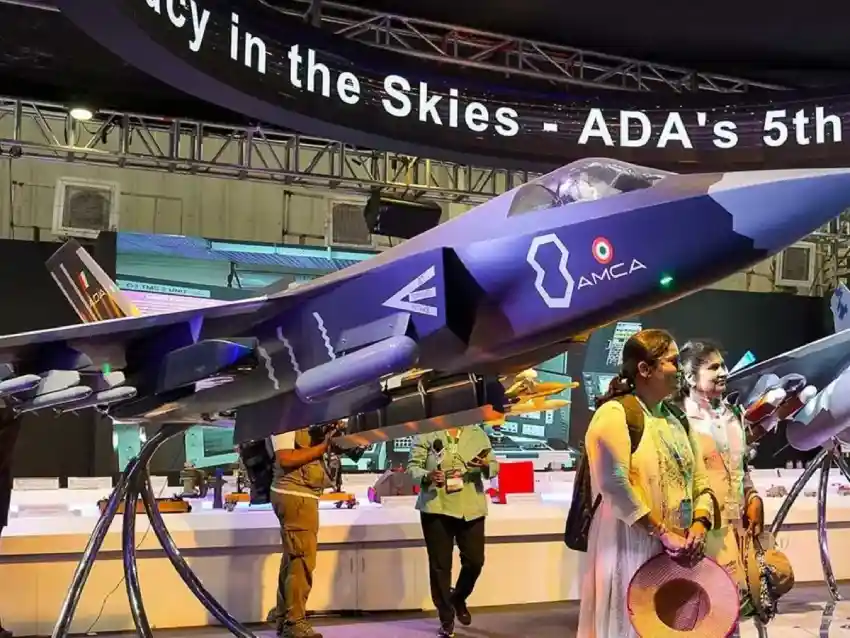Private Firms Line Up for HAL’s 5th-Gen Stealth Fighter Deal
Private players have sent in 28 proposals to Hindustan Aeronautics Limited (HAL), keen to partner with the latter on India's most ambitious defence aerospace project — the Advanced Medium Combat Aircraft (AMCA), a fifth-generation stealth fighter. One or two of these private players will be selected by HAL by September 30, HAL Chairman D.K. Sunil confirmed on Sunday.
A special committee of HAL is already evaluating the bids, balancing them against criteria like technical expertise, financial strength, experience in the industry, and depth of R&D. The selected companies will collaborate with HAL on co-creating a consortium and taking forward one of India's most strategically significant military projects.
The Aeronautical Development Agency (ADA), which falls under the Defence Research and Development Organisation (DRDO), is guiding the AMCA programme. HAL intends to submit its consortium offer to ADA before the September-end deadline. As Sunil put it, the framework has room for a maximum of three partners, though the shortlist will probably reduce to one or two heavyweights from India's defence and aerospace industry.
Huge industry players like Larsen & Toubro, Tata Advanced Systems, Mahindra Defence, and Adani Defence & Aerospace are some of the names in the running. The chosen partners will have a critical job in establishing assembly lines, creating prototypes, and supporting flight trials, testing, and certification.

AMCA Timeline and Abilities
- First flight of the prototype: Planned in 2029
- Completion of the development phase: By 2034
- Series production: Expected to begin in 2035
Weighing around 25 tonnes, the AMCA will be designed as a swing-role stealth fighter for both air-to-air and air-to-ground roles. It will boast:
- Internal weapons bays for stealth
- Super-cruise capability
- Advanced mission computers and avionics
- 360-degree situational awareness systems
The initial two squadrons will operate the AMCA Mk-1 powered by US-built GE F-414 engines, and the advanced Mk-2 variant will have an indigenous engine co-developed by France's Safran and India's GTRE with full technology transfer and intellectual property rights vested with India.
Strategic Significance
Accelerating the AMCA programme is critical in the wake of regional events. China has deployed its J-20 stealth fighters already and is also conducting trials of the J-35, while Pakistan has been investigating stealth fighter purchases. India plans to induct about 120 AMCAs (six squadrons) by 2035, solidifying its long-term deterrence and modernization objectives.
The AMCA programme not only signifies India's joining of the select group of fifth-generation fighter makers but also a significant expansion of indigenous aerospace and defence production. Led by HAL, with private enterprise as the co-drivers, the programme signifies India's resolve to achieve strategic autonomy and technological superiority in the air.
Read more:
Tata, Indra Deliver Advanced Naval Air Surveillance Radar to Navy
DRDO transfers three advanced materials technologies to the industry

















